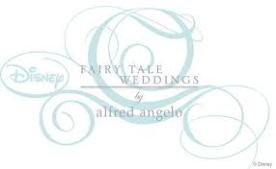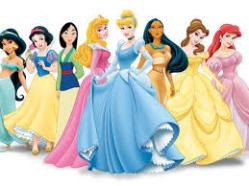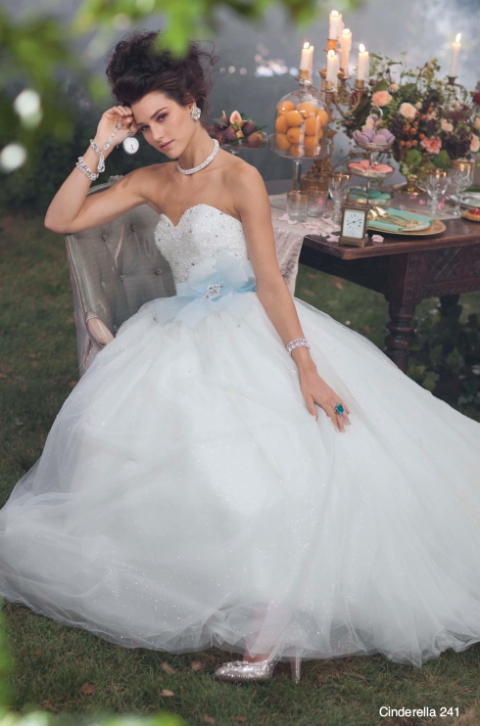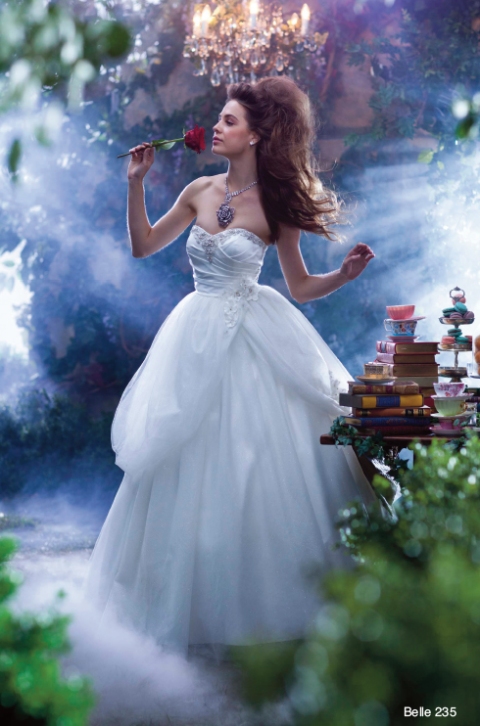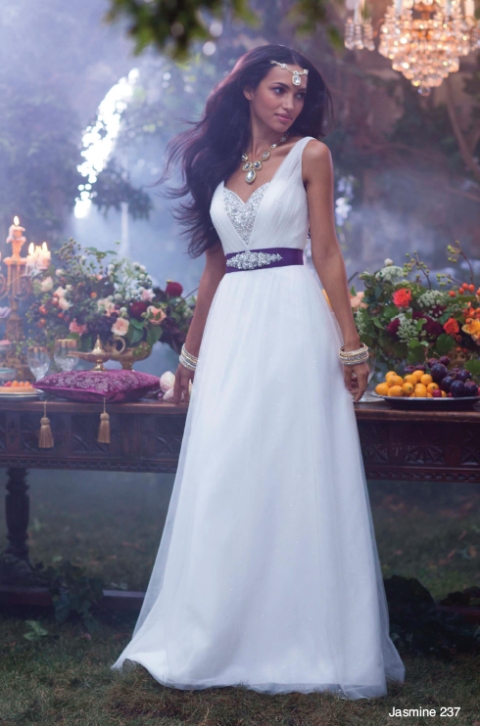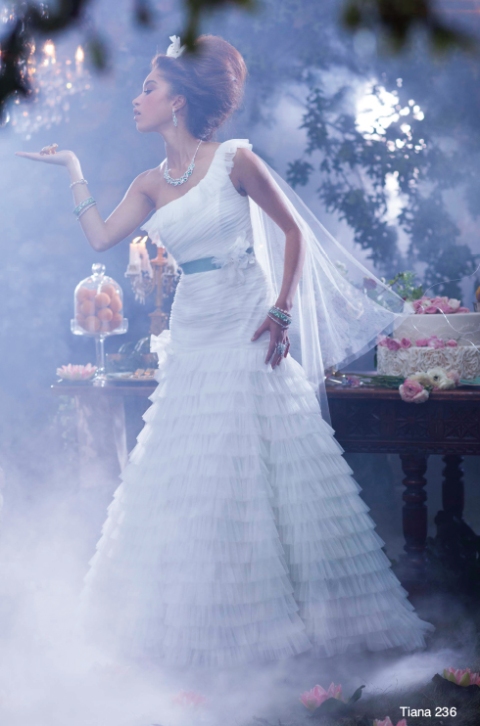Disney Princess is a media franchise owned by The Walt Disney Company. Created by Disney Consumer Products chairman Andy Mooney in the late 1990s, the franchise features a line-up of fictional female heroines who have appeared in various Disney franchise.
The franchise doesn’t actually include all noted princesses from any Disney media as its name suggested, but only certain members are commonly used, mainly from animated films. The eleven current members of the franchise are Snow White, Cinderella, Aurora,Ariel, Belle, Jasmine, Pocahontas, Mulan, Tiana, Rapunzel and Merida.[1][2] The franchise has released dolls, sing-along videos, apparel, home decor, toys and a variety of other products[3] featuring the Disney Princesses.
History and conception
“Standing in line in the arena, I was surrounded by little girls dressed head to toe as princesses…They weren’t even Disney products. They were generic princess products they’d appended to a Halloween costume. And the light bulb went off. Clearly there was latent demand here. So the next morning I said to my team, “‘O.K., let’s establish standards and a color palette and talk to licensees and get as much product out there as we possibly can that allows these girls to do what they’re doing anyway: projecting themselves into the characters from the classic movies.'”
Former Nike, Inc. executive Andy Mooney was appointed chairman of The Walt Disney Company‘s Disney Consumer Products division in the late 1990s.[4][5] While attending the his first Disney on Ice show, Mooney noticed that several young girls attending the show were dressed in princess attire that were not authentic Disney products.[6] “They were generic princess products they’d appended to a Halloween costume,” Mooney told The New York Times. Concerned by this, Mooney addressed the company the following morning and encouraged them to commence work on a legitimate Disney Princess franchise in January 2000.[4]
The original line-up consisted of princesses Snow White, Cinderella, Aurora, Ariel, Belle,Jasmine, Pocahontas, Mulan and Tinker Bell, four of whom are royal by blood, two whom have married into royalty, and two others who fit in the “princess mythology.” However, Tinker did not fit and was removed from the line-up. This was the first time the characters would be marketed in a separate franchise than their original films. Mooney decided that, when featured on marketing advertisements such as posters, the princesses should never make eye contact with each other in an attempt to keep their individual “mythologies” intact. “[Each] stares off in a slightly different direction as if unaware of the others’ presence.”[4]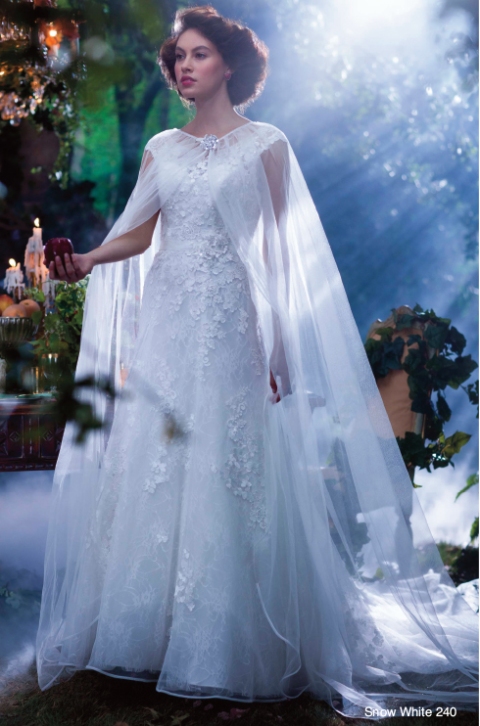
Despite limited advertising and no focus groups, the various Disney Princess items released became a huge success.[4] Sales at Disney Consumer Products rose from $300 million in 2001 to $3 billion in 2006.
Tiana, officially on March 15, 2010, became the first additional character to the Princess franchise taking Tinker Bell’s short-lived place as the ninth member. Her coronation took place at the New York Palace.[7] Rapunzel was “coronated” and officially inducted into the Disney Princess franchise on October 2, 2011 at Kensington Palace in London, England.[8] On May 11, 2013, Disney officially added the first Pixar character Merida as the 11th Princess to the franchise in a coronation ceremony at in front of Cinderella Castle at the Magic Kingdom, Disney World.[1]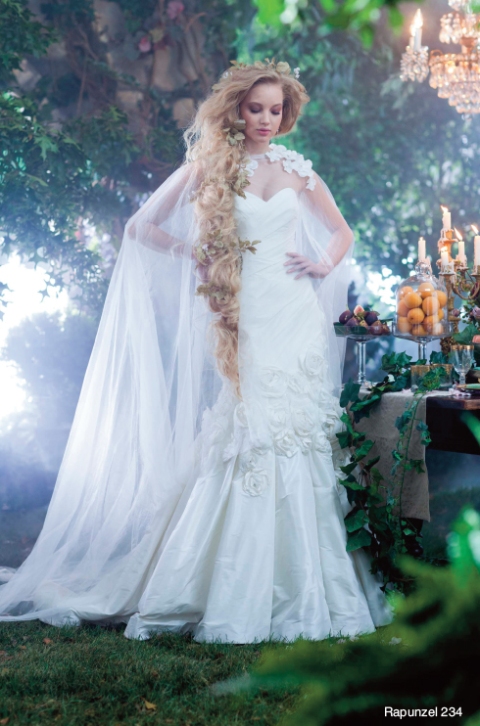
Unconfirmed reports in early 2014 state that Anna and Elsa from the Disney film Frozen, will be added to the Disney Princess franchise as the twelfth and thirteenth princesses in 2014, making Frozen the first Disney film to feature two Disney princesses.[9]
Disney Princesses
Originals
Snow White
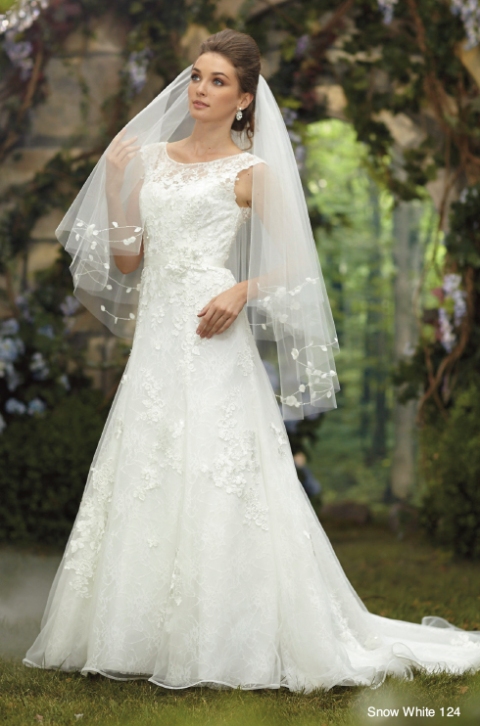
Snow White is the first and original Disney Princess. A main character in Walt Disney Animation Studios‘ first animated feature film Snow White and the Seven Dwarfs (1937), Snow White is a beautiful young princess born with skin as white as snow, hair as black as ebony, and lips red as the rose. She is forced to seek refuge in the home of the seven dwarfs, where she hides from her evil stepmother, The Queen, who is jealous of Snow White’s beauty and seeks her death. Snow White is often described as a kind, optimistic, and happy person who sees the good in everyone. Originally voiced by Adriana Caselotti, she is based on the heroine of the German fairy tale Snow White (1812) by the Brothers Grimm. She has also been voiced by Mary Kay Bergman, Carolyn Gardener, and most recently Katherine Von Till.
Cinderella
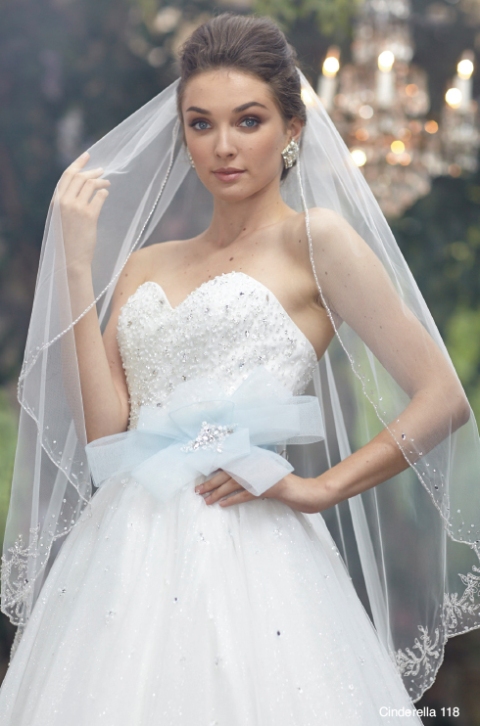
Cinderella is the second Disney Princess and the title character in Disney’s 12th animated feature film Cinderella, released in 1950. She is often considered the “Leader of the Disney Princesses”. Forced into servitude by her evil stepmother and cruel stepsisters, Cinderella dreams of going to the ball. When all seems lost, her fairy godmother allows her to attend, where she meets and falls in love with the Prince. Cinderella is based on the heroine of the French fairy tale Cinderella by Charles Perrault. Originally voiced by Ilene Woods, in recent animated features she is currently voiced by Jennifer Hale. In the original movie, Cinderella’s hair was intended to be more of a strawberry-blonde color, but today she is depicted as having blonde hair.
Aurora
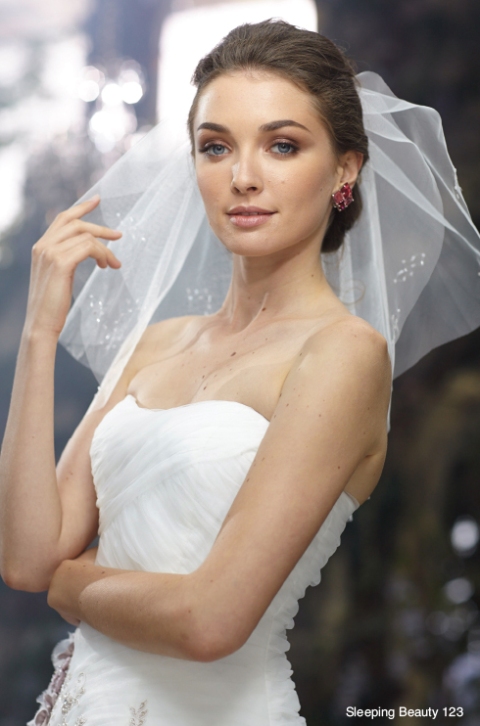
Aurora, originally voiced by Mary Costa, is the third Disney Princess. She first appeared in Disney’s 16th animated feature film Sleeping Beauty (1959). The motion picture is adapted from the French fairy tale The Sleeping Beauty by Charles Perrault (1697), from the German fairy tale Little Briar Rose (1812) by The Brothers Grimm and from The Sleeping Beauty ballet by Pyotr Ilyich Tchaikovsky (1890). Aurora has hair of sunshine gold, lips that shame the red rose and is often described as beautiful, kind, shy and sophisticated. She is also a hopeless romantic. At first, she is seen as a little naive and insecure as a result of being sheltered for most of her life, but unlike Snow White, she is somewhat pluckier and more opinionated. In later media, she is shown to have matured and become more self-assured, independent and confident. She was later voiced by Erin Torpey, Jennifer Hale and is currently voiced by Kate Higgins.
Ariel
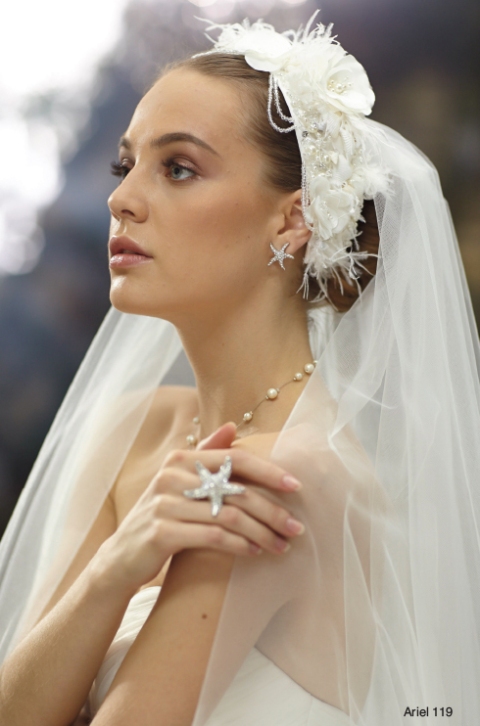
Ariel is the fourth Disney Princess, as well as the title character in Disney’s 28th animated feature film The Little Mermaid, released in 1989. Daughter of King Triton and the youngest of seven sisters, Ariel is a princess in the undersea kingdom Atlantica (according to later media in the franchise). Fascinated by the human world and tired of life under the sea, Ariel makes a deal with Ursula the sea witch, trading her voice in return for humanity. Based on the Danish fairy tale The Little Mermaid by Hans Christian Andersen, Ariel is voiced by Jodi Benson. The character was inspired by the protagonist in Andersen’s story, but was developed into a different personality for the film.[10] Ariel is fiercely independent and a dreamer, which is notable in her collecting of human world treasures in her private grotto. She is bold and a risk-taker. Ariel is distinguished by her bright red hair, purple/lavender seashell bra and green tail.
Belle

Belle is the fifth Disney Princess, first introduced in Walt Disney Picture’s 30th animated feature film Beauty and the Beast (1991). Based on the heroine of the French fairy tale byJeanne-Marie Le Prince de Beaumont, Belle was created by screenwriter Linda Woolverton[11] and originally animated by James Baxter[12] and Mark Henn.[13] Originally voiced byPaige O’Hara, Belle is currently voiced by Julie Nathanson.
Frustrated with her provincial village life, book-loving Belle longs for adventure. When her father Maurice is imprisoned by a hideous beast, Belle sacrifices her own freedom in return for his. At first frightened by the Beast’s physical appearance and repulsed by his selfishness, Belle learns to appreciate him after he rescues her from a pack of hungry wolves, expressing her gratitude by tending to his wounds. While the Beast’s love for Belle gradually results in him adapting a more friendly and civil manner, Belle befriends him, eventually managing to fall in love with him by the time the last petal falls off an enchanted rose, which ultimately breaks a spell cast on him and transforms him back into a handsome prince.
Personality-wise, Belle has been regarded as an independent,[14] intelligent,[15] courageous[16] and headstrong,[17] as well as a feminist.[18] The character has been universally lauded by critics, garnering specific praise and recognition for her intelligence and bravery. The Los Angeles Times hailed Belle as one of the Disney Princesses responsible for “break[ing] the bonds of convention”.[19] The Globe and Mail praised the character, complimenting her intellect and labeling her the “main attraction of Beauty and the Beast“.[20]Entertainment Weekly highlighted the character’s independence, calling her “the hero” of the film and accrediting her with making Beauty and the Beast the best Disney Princess film.[21] The Washington Post described Belle as “more mature, more womanly and less blandly asexual” than previous Disney heroines.[22] The American Film Institute nominated Belle for its list of 100 Years…100 Heroes and Villains.[23] Belle remains the best-received Disney Princess to-date.
Jasmine
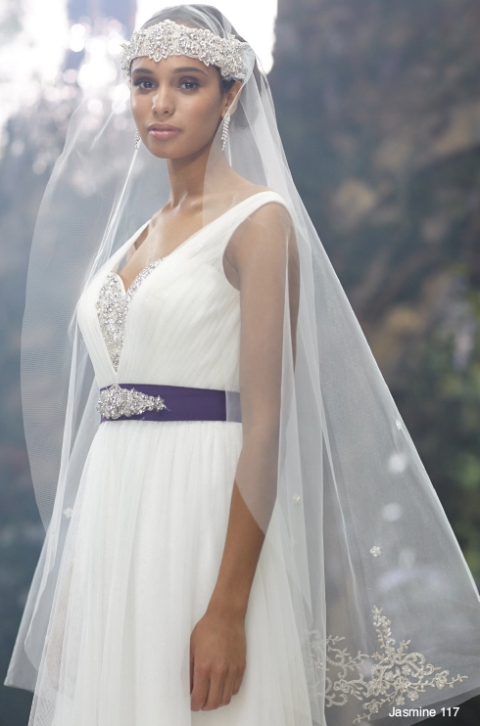
Jasmine is the sixth Disney Princess and the leading lady of Disney’s 31st animated feature film Aladdin (1992). Jasmine hungers for independence, tired of the restrictions laid before her by her father. She falls in love with Aladdin while he is disguised as a prince, after he takes her on a romantic ride on a magic carpet. Aladdin’s genie companion is summoned by Jafar, who uses the genie’s magic to tyrannically overthrow Jasmine’s father, the Sultan. Luckily, after Jafar’s defeat, the Sultan permits Jasmine to wed Aladdin despite his lack of royal heritage. Princess Jasmine is voiced by Linda Larkin, and her singing voice is provided by Lea Salonga (in the feature film) and Liz Callaway (in the direct-to-video sequel).
Jasmine is based on Princess Badroulbadour from the One Thousand and One Nights tale of “Aladdin and the Wonderful Lamp”.
Pocahontas
Pocahontas is the seventh Disney Princess and first appeared in Disney’s 33rd animated feature film Pocahontas (1995). Based on the Native American chief’s daughter,Pocahontas (c. 1595–1617), and the settlement of Jamestown, Virginia in 1607. Pocahontas is displayed as a noble, independent and highly spiritual young woman. She expresses wisdom beyond her years and offers kindness and guidance to those around her. An adventure and nature lover, in the film she appears to have shamanic powers since she was able to commune with nature, talk to spirits, empathize with animals and understand unknown languages. In the sequel, Pocahontas seems to have grown after hearing of John Smith’s assumed death. She keeps her independent spirit and playfulness, but is much more mature and self-assured than she was in the first film. During her stay in England, she nearly loses herself in the hustle and bustle of the new world and is almost turned into someone she’s not. But in the end she bravely intends to sacrifice herself for her people’s safety and returns to her homeland, finding herself, and love, once again. She was voiced by Irene Bedard while her singing was provided by Judy Kuhn.
Mulan
Fa Mulan is the eighth Disney Princess and first appeared in Disney’s 36th animated feature film Mulan (1998). The movie is adapted from the legend of Hua Mulan (386–536). Mulan, atypical and unlike most previous female roles, is courageous and more self-reliant. She also does not fit in with the expectations of a young Chinese girl of the time; despite her natural beauty, she is clumsy, outspoken, and independent rather than graceful, silent and demure. Her meeting with the matchmaker ended in chaos because of this, (with help from a certain cricket), and the matchmaker claimed that even though she had the looks of a bride, she would never find a match. However, her courage, intelligence, and determination helped her through her adventures, in which she disguises herself as a male soldier in order to fight in the Chinese army in place of her wounded father. She was voiced by Ming-Na while her singing was provided by Lea Salonga.
Additions
Tiana

Tiana, voiced by Anika Noni Rose, is the ninth Disney Princess character to be incorporated into the franchise, appearing in Disney’s 49th animated feature film The Princess and the Frog (2009). Her film is loosely based on the novel The Frog Princess by E. D. Baker, which is in turn based on the Brothers Grimm fairy tale The Frog Prince. Tiana is portrayed as being a hardworking, ambitious, and beautiful young woman who has no love interest (at the start of the film). Living in New Orleans, Louisiana, during the 1920s, Tiana strives to achieve her goal of opening her own restaurant (an ambition inspired by the accomplishments of real life restaurateur Leah Chase).[24] However, she is transformed into a frog after trying to break a spell cast by a Bokor on Prince Naveen that had changed him into a frog also. Throughout the film, the pair must embark on a quest to find a way to break the spell.
Rapunzel
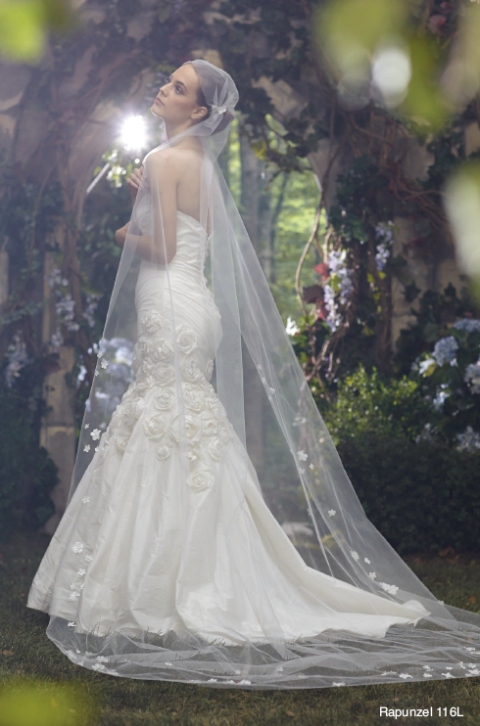
Rapunzel is the tenth Disney Princess. First appearing in Walt Disney Picture’s fiftieth animated feature film Tangled (2010), Rapunzel was based on the heroine of the German fairy tale by the Brothers Grimm. Created by screenwriter Dan Fogelman, Rapunzel was originally animated by Glen Keane, and is voiced by recording artist and actress Mandy Moore. The character was “coronated” and officially inducted into the Disney Princess franchise on October 2, 2011 at Kensington Palace in London, England.[8][25][26]
A princess born with long, magical golden hair, Rapunzel, stolen from her parents at infancy, is raised by Mother Gothel, a vain woman who exploits her hair to remain young and beautiful. Incarcerated in an isolated tower for eighteen years, Rapunzel enlists the help of a wanted thief named Flynn Rider to see the floating lanterns in time for her eighteenth birthday.
Rapunzel is notably the first Disney Princess to appear in a CGI film, but is frequently revamped to a traditionally-animated design when appearing in merchandising alongside fellow, classically-animated Princesses.
The character has been generally well received by most critics. Particular praise was awarded to her spirited personality and contemporaneity. The Los Angeles Times described Rapunzel as “a very modern young woman”.[27] The New Yorker called Rapunzel a witty and intelligent character,[28] while USA Today wrote, “Rapunzel is more believable in her teenage histrionics” than previous Disney heroines.[29] However, some reviews, such as the two provided by Time Out, were less favorable in their opinions of the character, describing her as both a “bland”[30] and “synthetic” character.[31]
Merida
Merida is the eleventh Disney princess, first appearing in the Pixar film Brave (2012),[1] Voiced by Kelly Macdonald, the character’s singing voice is provided by Julie Fowlis. created by director and screenwriter Brenda Chapman. Merida is the 16-year old daughter of Queen Elinor, who rules the kingdom alongside King Fergus. Queen Elinor’s expectations of her daughter make Merida see her mother as being distant while also causing friction between the two. Despite Elinor’s desire to see Merida as a proper royal lady, Merida is an impetuous girl who wants to take control of her own destiny. She has honed her skill in archery, and is one of the most skilled archers ever seen. She is also skilled in sword-fighting and cross-country horse riding on her horse, Angus.
She is the first Disney princess in the line-up to not have a love interest in her film. She is also the first Pixar and the second CGI princess.
Reception
The Disney Princess franchise has received mixed reception from critics and customers, particularity feminists.
Tension has been present between the Disney Corporation and feminists ever since the release of Snow White and the Seven Dwarfs in 1937. The type of representations of women in Disney films reflect Walt Disney’s personal feelings about family life, which in turn also shaped the Disney Company. Another influence was the fact that Disney’s attitudes mirrored the patriarchal cultural beliefs of the 1940s about what roles women should play in society.[41]
On December 24, 2006, Peggy Orenstein published “What’s Wrong With Cinderella?” in The New York Times. In her article, Orenstein discussed her concerns about the effects of princess figures on young girls. Orenstein used the Disney Princesses specifically to present many of her points. Orenstein also noted the pervasive nature of Princess merchandise and that every facet of play has its princess equivalent.[4] Tamara Weston of Time magazine criticized the franchise, referring to the princesses as “damsels in distress” and negative role models for young girls.[42]
The introduction of different ethnicities in Disney animated features has also faced skeptical reactions, as well as criticism, from authors and media alike. An example is Princess Sofia in “Sofia the First: Once Upon A Princess”, presented as Disney’s first Latina princess. Dubious reactions to Disney’s statement about the Princess being a Latina and the lack of characteristics actually identifying her as such placed the studio under mild fire and fueled discussions in the blogosphere. Similar reactions were evident upon the release of “The Princess and the Frog” regarding the main heroine, Tiana.[43]
